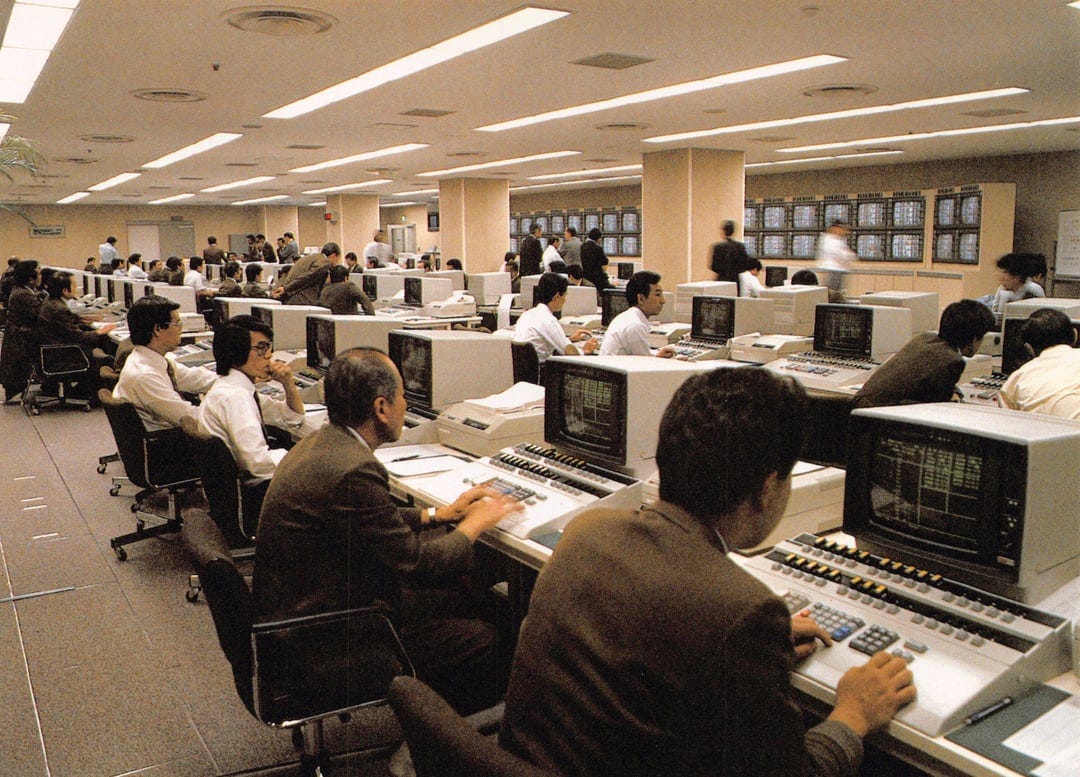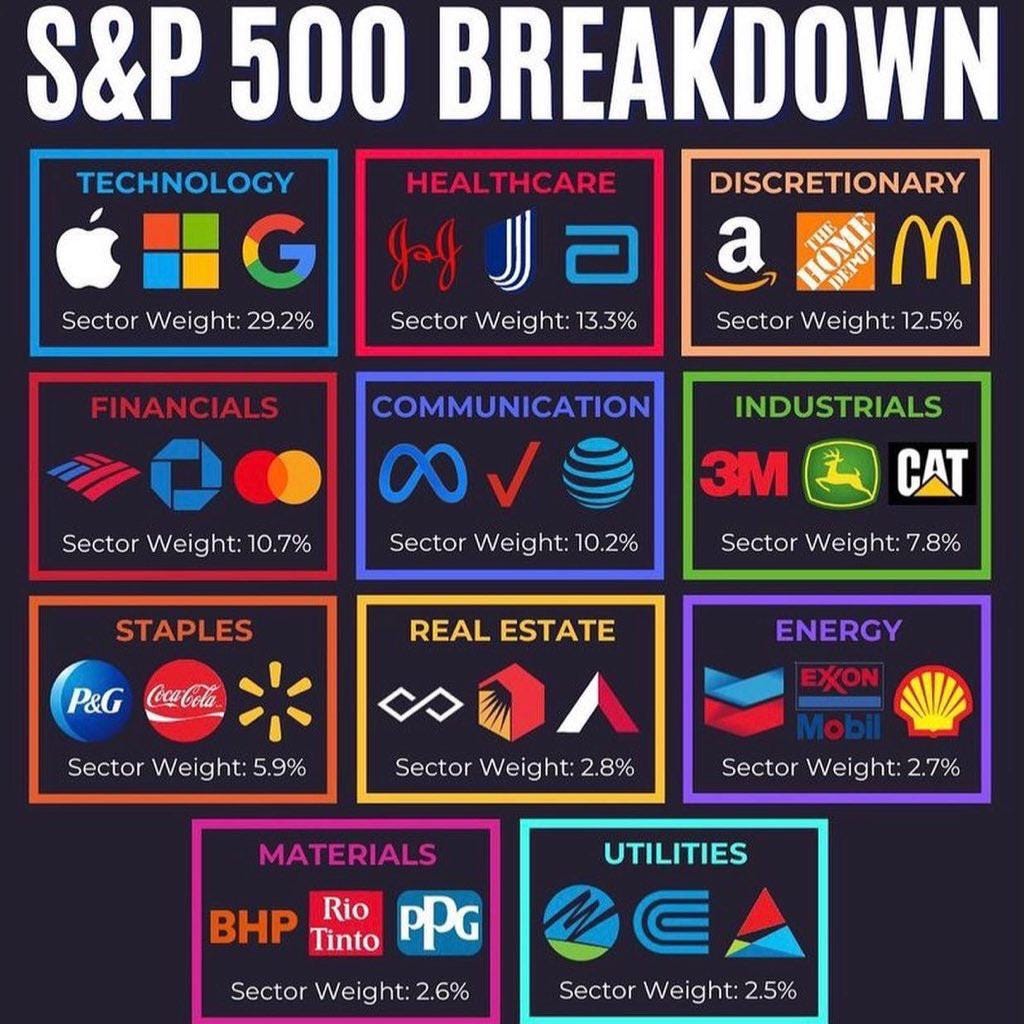Stock Alpha: Using AI for Equity Research
With AI, our goal is to democratise information on stocks & other financial products for every investor on the planet
If you’re reading this, it doesn’t matter where you lie on the spectrum of understanding how stock markets or finance in general works.
Pretty much everyone knows that a stock exchange is where people can trade pieces of paper that represent ownership in companies for a mutually agreed upon price.
More recently these pieces of paper have been replaced by rectangular buttons or swipe actions on your smartphone- resembling your local casino slot machine.
We all might have different reasons for participating or not in stock markets, but hardly do you even think about how this omni-present, intangible all consuming phenomena that dominates global headlines 24x7 even get started?
Maybe you recall seeing movies with traders at Wall Street in the 80’s fighting it out in ‘Trading Pits’ & shouting orders with slips of paper
Or Michael Douglas as ‘Gordon Gekko’ in his swanky corner office reciting the ‘Greed is Good’ speech, as he made a multi-million dollar trade
If you’re younger, perhaps the whole ‘Wall Street Bets’ mania in 2021 caught your imagination & prompted you to YOLO into GameStop stock on your Robinhood app
However, not many know that the beginnings of financial markets were much humbler- when the erstwhile Dutch East India company issued the first recorded shares of ownership in its company back in the early 17th century, to fund its shipping voyages around Asia for trading spices.
Eventually, this led to the formation of the Amsterdam Stock Exchange in early 17th century where trading was done in person, with buyers and sellers meeting in coffee houses or on trading floors. The process was slow, manual, and prone to errors, but it laid the groundwork for more structured markets.
Over the next 400+ years, following were some of the key inflection points in how stock markets operated around the world 👇🏻
⏩ Telegraph and Telephone (Mid-19th Century)
The telegraph (invented in the 1830s) and later the telephone (1876) revolutionised market operations by enabling instant communication over long distances.
Before these inventions, trading was local, and prices were only known in the immediate vicinity.
The telegraph allowed for the creation of a more unified, national market, where prices from one exchange could be quickly transmitted to others.
The telephone further enhanced this, allowing brokers to place orders quickly and efficiently.
⏩ Ticker Tape (1867)
The ticker tape machine, introduced in 1867, was one of the first real-time stock price reporting systems. It printed stock prices on a narrow strip of paper, allowing traders to see price changes as they happened.
This advancement meant traders no longer had to be on the exchange floor to know the latest prices. It decentralised trading activity and allowed for more informed and timely decision-making.
⏩ Electronic Trading & Computerisation (1960s-1980s)
The introduction of computers in the 1960s & 70s began to transform trading. The New York Stock Exchange (NYSE) introduced an automated quotation system in 1971, and in 1976, it launched the Designated Order Turnaround (DOT) system, which routed orders electronically.
These advancements led to the birth of electronic trading, where orders could be matched and executed without the need for manual intervention.
This shift reduced the time it took to execute trades and significantly increased the volume of trading.
⏩ Algorithmic & High-Frequency Trading (1990s-2000s)
The 1990s saw the rise of algorithmic trading, where computer programs executed trades based on predefined criteria. By the early 2000s, high-frequency trading (HFT) emerged, where trades were executed in milliseconds using powerful computers.
Algorithmic trading and HFT transformed market operations by increasing liquidity, tightening spreads, and reducing the market impact of large trades.

Large trading firms & hedge funds such as Renaissance Technology & DE Shaw, specifically focused on algorithmic trading & a quantitative approach to trading stocks emerged as some of the best performing funds in the past 2 decades.
The Internet & Online Trading Platforms (1990s-Present)
The advent of the internet in the 1990s democratised access to financial markets. Online trading platforms allowed individual investors to trade directly from their computers, bypassing traditional brokers.

This development dramatically increased market participation, as retail investors could now trade with ease. It also led to the rise of discount brokers like Robinhood in the US & Zerodha in India, making markets more accessible to everyone.
What Is The Next Inflection Point? (2024- )
While the number of individuals investing in the markets have risen exponentially in the past 20 years, the data clearly points towards how most of it is passively invested via index funds or mutual funds, versus direct stock investments.
As per a recent report from LSEG, global passive investing funds’ AUM stood at $15.1 trillion at the end of December, eclipsing that of active funds around $14.3 trillion.
While there are benefits of not having to think hard about which stocks to invest in & deposit a fixed amount every month into an ETF or mutual fund, the rise of passive investing has led to an over-concentration of Big Tech companies in the major indices, with almost 30% of the S&P 500 controlled by the Mag 7- Apple, Google, Meta, Amazon, Nvidia, Microsoft & Tesla.
As more funds from passive investors get poured into these indices on a monthly basis, it creates a reinforcing loop of their stock price & market cap rising disproportionately more compared to underlying fundamentals.
This creates all sorts of inefficiencies in price discovery for a stock, where the market price does not accurately reflect the true value of the company at any point, instead signalling an artificially propped up reflection of passive investor fund flows into the broader index.
While one could argue that this isn’t the worst thing in the world, and the large Tech companies have sound fundamentals with >20 % growth rates, every dollar passively invested is capital that could’ve gone into the next Apple or Google.
For the longest time, the narrative has been that retail investors are too dumb or busy or a combination of both to take any active interest to invest in specific stocks & should leave it to the “experts”
However, if you look at the data you will find that more than 90% of these “experts” that actively manage equity funds, fail to beat the underlying index.

Could AI Help Us Get Better At Active Investing?
So where does that leave retail investors?
We at Stock Alpha believe that the next big inflection point in financial markets is the ability for investors to use AI for making sense of the vast information out there on stocks & do their own research instead of relying on an expensive wealth manager or pay high fees associated with mutual funds.
Over the past 24 months, we’ve seen Large Language Models like ChatGPT & Claude capture public imagination by being able to perform tasks such as writing, summarisation, coding & even reasoning far better than anyone could ever expect.
While the use of AI in Finance & investing in general is nothing new, it was largely restricted to large hedge funds which could invest in building their own proprietary machine learning algorithms.
However, LLM’s like ChatGPT offer the opportunity to not just generate content & summarise large documents but actually reason through different scenarios by ingesting huge amounts of qualitative & quantitative data from multiple sources.
Why Are We Building Stock Alpha?
We at Stock Alpha are enabling research analysts & investors save hours of manual data collation & extracting, by giving them insights on stocks in seconds.
With context over Annual Reports, Transcripts & Investor Decks, along with the ability to browse the web- Stock Alpha helps its users in 3 main ways:
Give Answers
Generate Summaries
Extract Structured Tables
Why the need for a separate product specifically for financial information? There are two ways to answer that:
❌ ChatGPT Sucks On Financial Questions
Check out how Stock Alpha compares to it when asking it to calculate Free Cash flow for Reliance in FY 2024
While these models are on the exponential curve of getting better, we at Stock Alpha have built the data pipelines & UX around our product to solve for the use-case of researching on stocks, rather than a general intelligence chatbot
❌ Existing Equity Research Incumbents Don’t Get AI
Bloomberg is the largest player in the market for equity research, with its 300,000+ terminals raking in more than $10 Billion in revenue for the company every year, however they just don’t get Generative AI & LLM’s.
The company released BloombergGPT back in March 2023, spending $10M to train that model which was quickly overtaken by Open AI’s GPT-4 on all benchmarks within a couple of months.
Our belief is that it’s not specific model training which will help solve for the use case of Equity Research or Financial Advisory in AI, but the orchestration of multiple data sources & consumer experience of the product.
If you’re an equity research analyst or investor spending hours doing this & want a better way to research, or are just curious about stocks- Sign Up for Stock Alpha & try asking a question on your favourite Indian stock now 👇🏻












